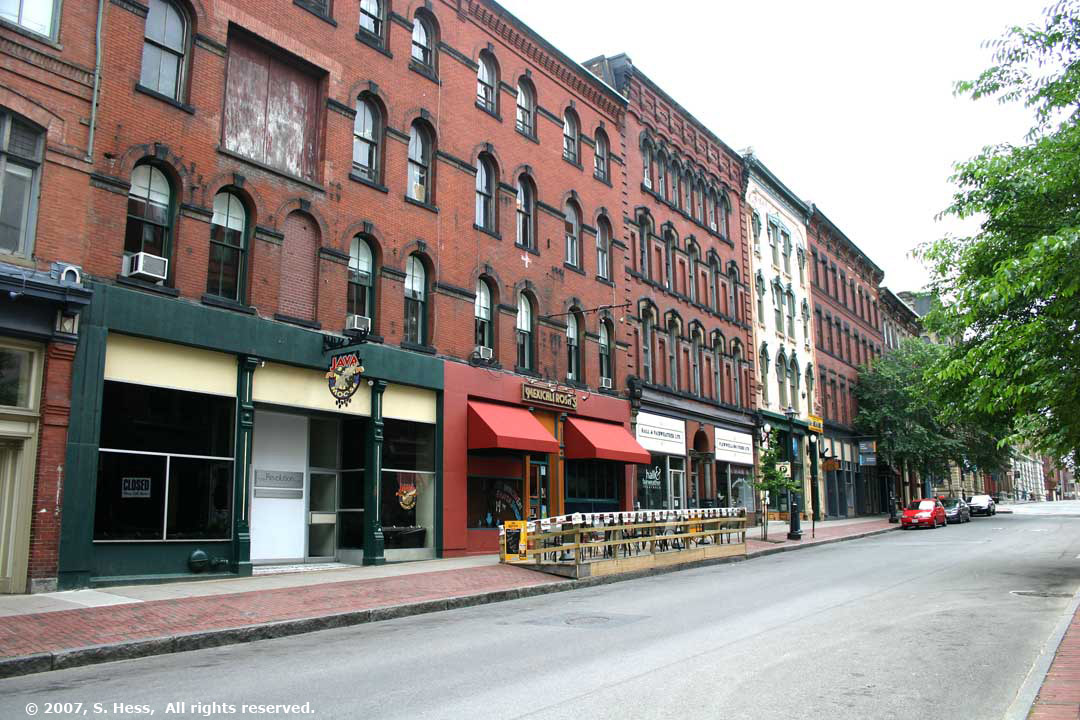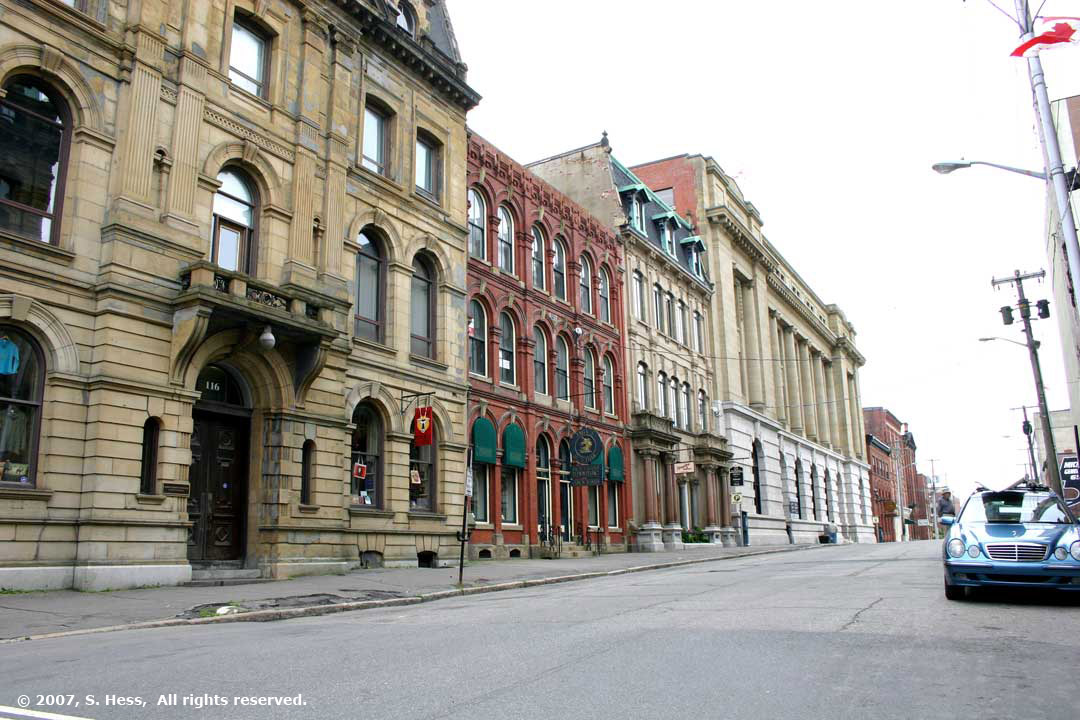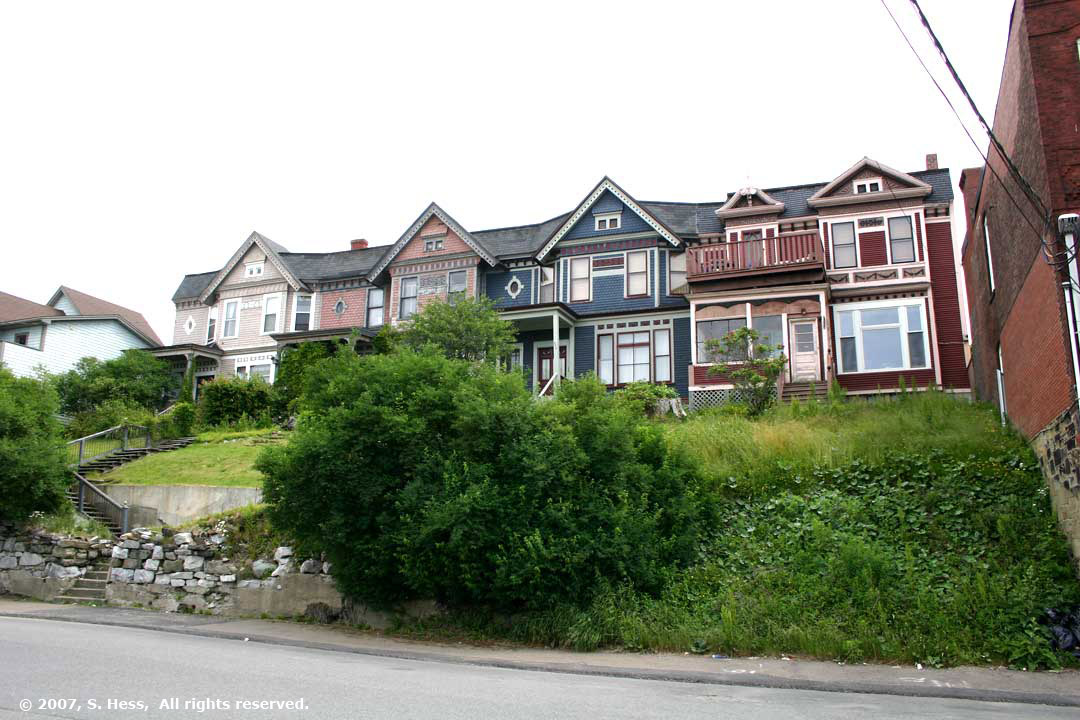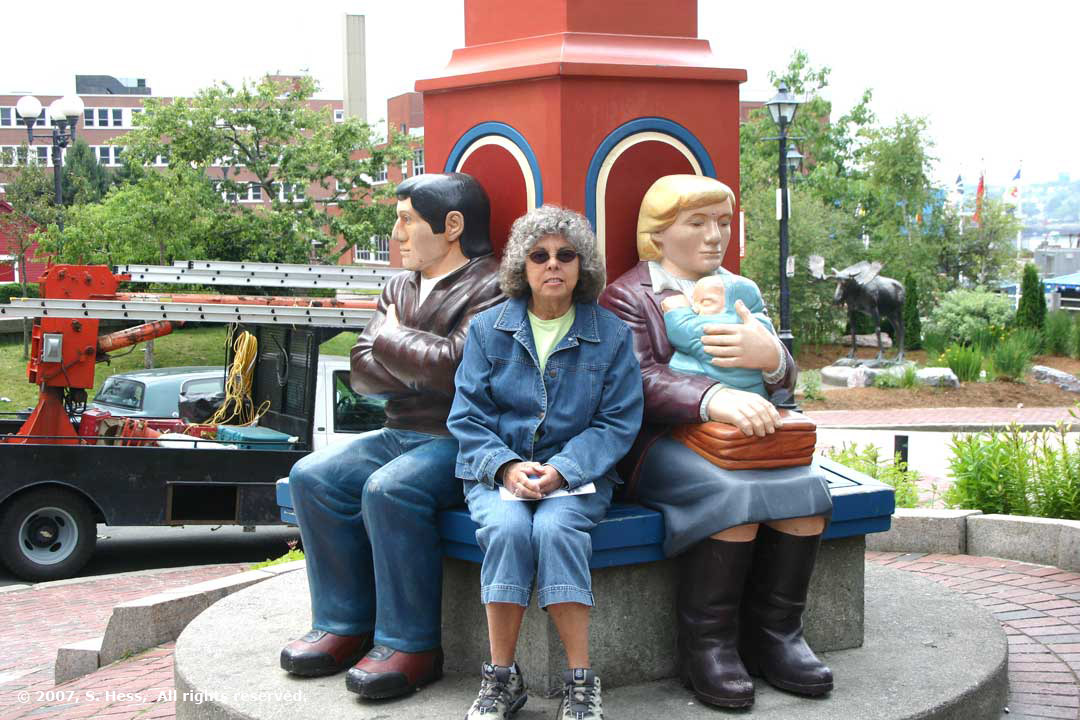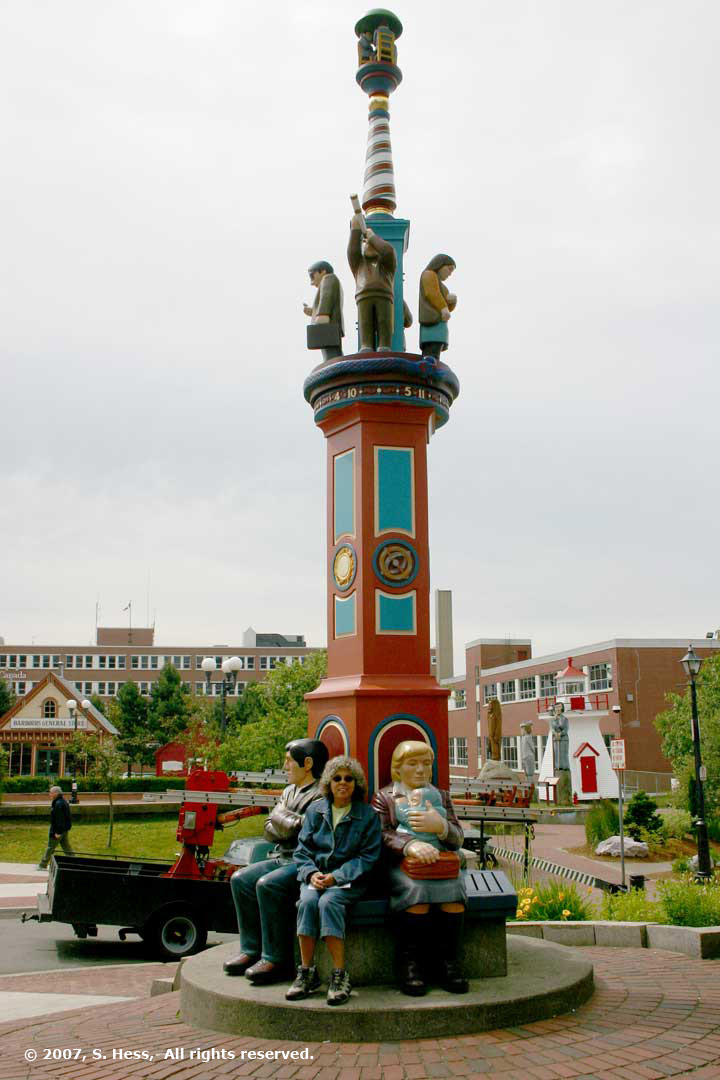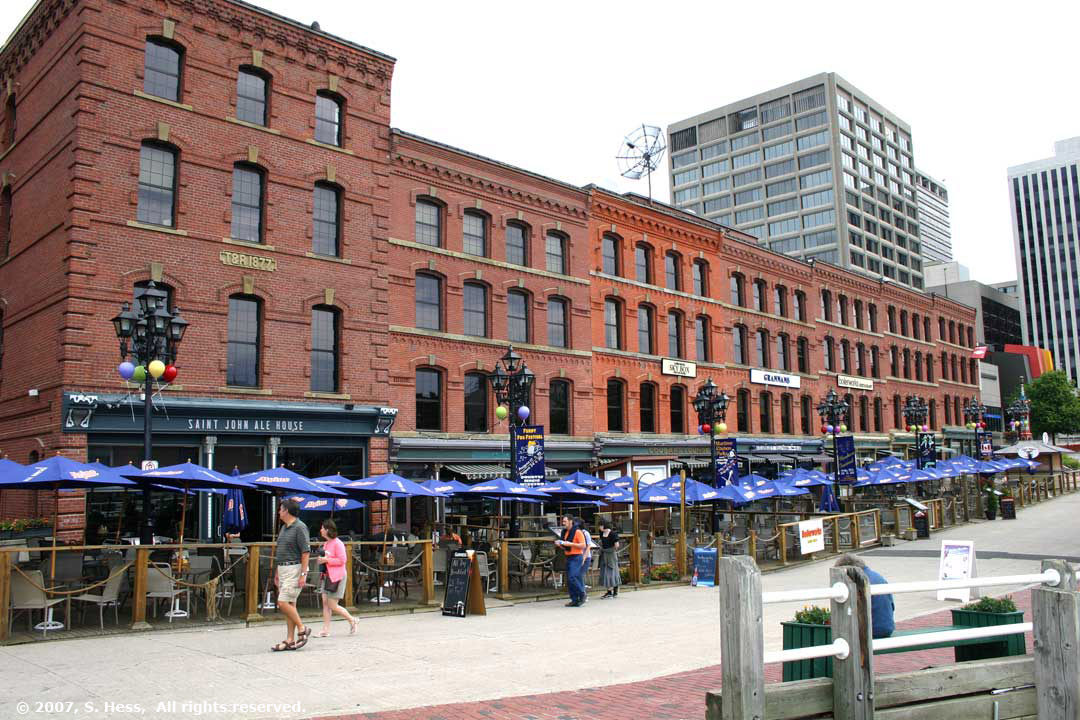St. John, NB
8 July 2007
Photo Gallery and Commentary
This morning we awoke to gray, threatening skies. Our plan was to walk through the historic Uptown section of St John and were determined that the weather was not going to change that plan. On the way into town from the campground, we stopped at the Visitor Information Center and got some literature on the various historic district walks and decided to focus Prince William Street, a few blocks from the waterfront.
St John is New Brunswick's largest city and biggest port (although the harbor looked a bit empty). The harbor was discovered by Champlain in 1604, but was not settled by the French. In 1783, 14,000 British loyalists, displaced by the War of Independence, moved here and created this town and several others in the immediate area. Due to its harbor, the city became an economic success and was one of the largest wooden shipbuilding centers in the world. The decline in the use of wooden sailing ships caused an economic downturn in the 1860s. The downturn was made worse by a great fire in 1877 that destroyed much of the Uptown area. When it was rebuilt, it was replaced by safer brick and stone buildings, many with ornate victorian touches. The Prince William Walk took us through this rebuilt area.
As we walked down Prince William Street, I was surrised by how few people there were around. I assumed that on Sunday we would not see many businesses open except those catering to the tourists. I also assumed that we would see many more tourists. Perhaps it was the weather or the fact that it was a Sunday but we had the district pretty much to ourselves.
